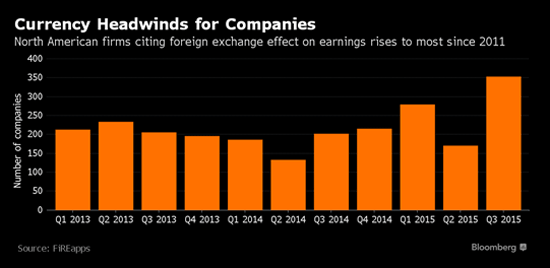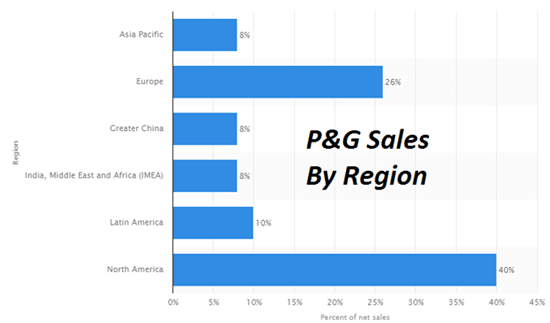Tony Sagami
“At current spot rates, we would expect a significant impact to revenue and profit again in 2016.”
—Martin Schroeter, CFO of IBM
We’re in the middle of earnings season, and one of the themes I am hearing over and over from American companies is how the strong dollar is killing their profits.
How strong? Since mid-2014, the US dollar has appreciated about 15% against a basket of trade-weighted foreign currencies. In 2015 alone, it was up 12%, the biggest one-year gain since the 1970s.
If you’ve traveled abroad recently, you know exactly what I’m talking about.
While a strong dollar is a positive for vacationing Americans, it is bad, bad news for American companies with significant international business because it makes US exports more expensive to foreign buyers and reduces the conversion of foreign profits from foreign currencies into dollars.
And it is only going to get worse. Wall Street economists predict that the US dollar will appreciate by another 4% against the euro and by another 6% against the Japanese yen.
In the third quarter of 2015, the strong US dollar decreased the average American company’s earnings by 12 cents per share, and a growing list of American companies are suffering even more dollar-related pain.
Dollar Casualty #1: Kimberly-Clark
Kimberly-Clark sells a lot of Huggies diapers all around the world. However, it reported that its 2015 revenues were down by 6%. Worse yet, it warned Wall Street that its 2016 revenues would fall by another 3%.
That sounds like business is bad, but Kimberly-Clark is actually pulling in more sales than ever. It is just the currency impact that makes its business look awful—if it weren’t for the effect of the strong US dollar, management said sales would actually be up 3%–5%.
Dollar Casualty #2: Procter & Gamble
Procter & Gamble gets 60% of its revenues from outside of North America, so it is one of the most vulnerable companies to a rising US dollar.
The company reported a 9% drop in quarterly revenues to $16.9 billion because of the dollar.
Dollar Casualty #3: Johnson & Johnson
Johnson & Johnson said its revenues were reduced by 7.5% in 2015 by currency losses.
Dollar Casualty #4: Monsanto
Monsanto is the world's largest seed company and gets 43% of its revenues from outside the US. The company just reported a loss for the fourth quarter of 2015, citing the strong dollar as one of the main reasons. It also cut its 2016 profit forecast from $4.44–$5.01 per share to $4.12–$4.79 per share.
Dollar Casualty #5: DuPont
Chemical company DuPont reported a quarterly loss of $0.29 per share, compared with a net income of $0.74 per share a year earlier. Sales slid 9.3% to $5.3 billion, but without the effect of the strong dollar, sales would have been down only 1%.
A 1% decline isn’t good, but a 9.3% is horrendous.
Dollar Casualty #6: 3M
3M, the maker of Post-it Notes, gets about two-thirds of its revenues from outside the US, and that global reach has cost it dearly. 3M reported an 8.3% drop in profits to $1.66 per share and expects the currency effects to reduce this year’s earnings by 5%.
“The Dollar Dog Ate My Homework”
“The Dollar Dog Ate My Homework”
Those are just a few examples from last week. We are certainly going to hear a lot more companies blaming the strong dollar for disappointing earnings.
And those the-dog-ate-my-homework excuses are going to continue for the rest of 2016.
Here’s what you need to do: Take a look at every stock you own and find out what percentage of the company’s revenues comes from outside the US.
If the answer is more than 40%, you should consider dumping the stock before the dollar shrinks profits (and stock price) even more.
There are always exceptions—but fighting the strong dollar is going to be a battle that your portfolio is going to lose.








0 comments:
Publicar un comentario